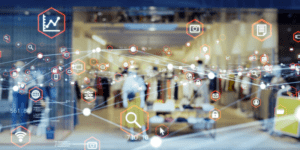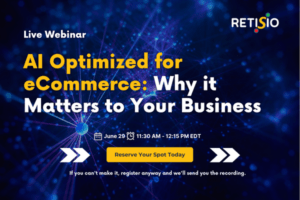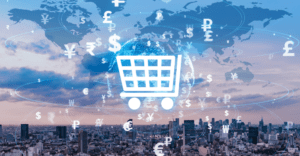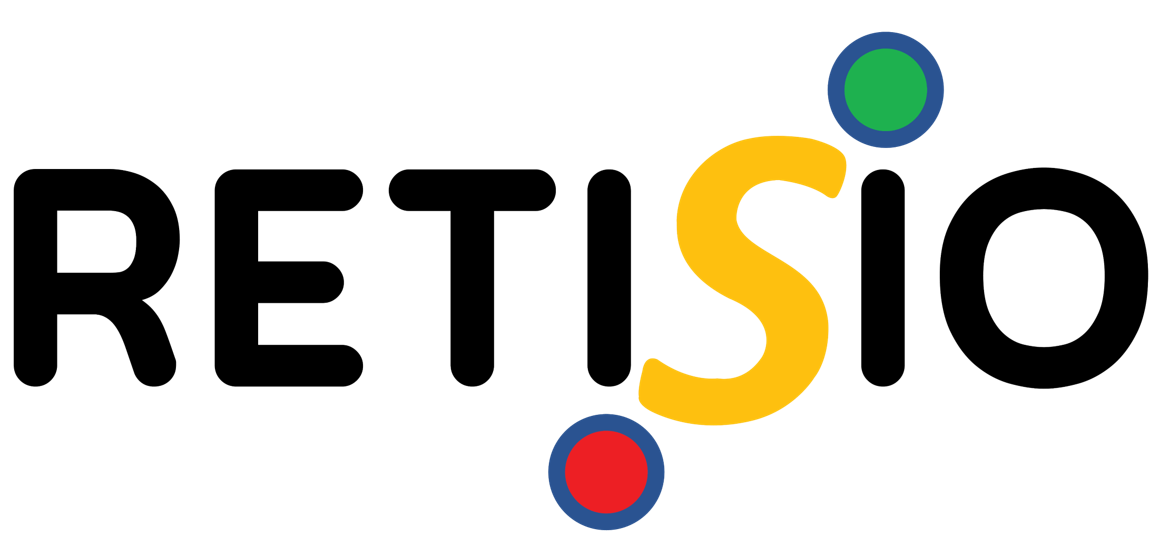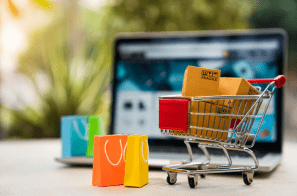RETISIO: Well good day and welcome to RETISIO’s Unlock Digital Commerce Podcast. This is the show where we explore the latest trends in technology in the fast moving world of digital commerce. In this interview style podcast, we ask the important questions of expert digital commerce practitioners and retail leaders to help you gain traction and sell more online.
In our conversation today, we are going to have a wrap up and review discussion of Shoptalk 2023. Held in Las Vegas in this past March. Shoptalk is one of the most popular trade shows in the retail e-commerce space. Today we’ll discuss how some of the major themes that came out of that show, what people were excited about, and new and innovative technologies and trends. Okay, now introduce our guests for today. We are super excited to have Andrea Moore on the podcast. Andrea’s currently the, yeah. Hey, Andrea. Andrea. Andrea’s.
Andrea’s currently the Chief Digital Officer at NEST New York, a luxury fragrance brand. She’s a seasoned digital omnichannel executive with a wealth of experience in the fashion retail and consumer brands sectors. Andrea’s expertise lies in devising, launching and expanding successful online and omnichannel businesses.
Again, welcome Andrea. We appreciate your being here and taking the time. So we look forward to the conversation. We also have, as always, Tony Moores lending his expert insight and opinions on all things related to digital commerce. Hey Tony. Hey Brett. Tony is currently the Chief Technology Officer at RETISIO.
He has a deep experience in leading retailers and brands and digital commerce tech implementations that enable them to operate more efficiently and reduce risk and grow their businesses. Okay. That said, we’ll get started right away with the conversation. You guys were both at Shoptalk this past March.
Let’s start with you, Andrea. Your major takeaways from the show and impressions themes that resonated with you?
Andrea Moore: I guess I don’t know how many Shoptalks I’ve been to now, maybe four or five. It’s hard to think with Covid in there, how many I’ve been to. But I think overarching, I would say the vibe and the mood was a little bit more down to business than maybe in the recent years, like last year, I felt like there was a lot of talk about the Metaverse and Web 3.0 and I think this year it because the economic uncertainty. So you remember last year, the first half of the year was very different than the second half of the year. Like the first half of the year was like the great resignation. People were, you couldn’t hire people. They were leaving jobs for lots of more money. And I think as the year went on, the economy started to soften up a little bit.
I don’t know if we officially have a recession or not, people way above my pay grade haven’t figured that out, but I think overall the vibe was a little more down to business. And I think when people talked about like future investments, It was about things that were more concrete, like ai, because AI is like here now.
As opposed to something like the Metaverse, which is harder to monetize, a little less tangible NFTs. Like last year there was a lot of talk about NFTs. I didn’t hear one person talk about NFTs, so think
Tony Moores: there’s they’ve kinda had a rough time. Last couple of months.
Last year there was definitely a big I think a post covid getting us folks are pretty excited to go out, get out and, but like you said, I think also the topics were a little bit softer. Bloodier. I don’t know how you would put it. Definitely definitely harder to monetize.
So yeah, I, I agree with that assessment a hundred percent.
Andrea Moore: Yeah. Yeah. So I think overall I would say that’s not a key theme, but it’s overarching sort of feeling about the show in general. It was a great show, incredible energy. 10,000 people, like more people than ever, more vendors than ever two sets of meetups.
Overall I thought the content was great and the show itself I thought was great, but I thought the energy was a little bit different. The things that I thought were interesting in terms of the key themes and trends that I heard, like in speaking with people, my peers and also vendors and also attending the sessions is really people do wanna get serious about ai and they do wanna have a plan for it.
I think they’re just trying to figure out what that time horizon looks like and how to prioritize it and what the right strategies are gonna be and what does that look like from an investment standpoint. I would say most people are probably at zero on ai unless they have vendors with technology that’s really leading the way.
Yeah,
Tony Moores: Especially if you’re talking about generative ai, the. Now nowadays anything that’s remotely automated, somebody, drops a.ai behind. But statistical learning, machine learning a lot of FinTech, MarTech that stuff’s been out there for a while.
And there was certainly no no lack of it. At this meeting. I saw a lot of folks, representing various automation products and services, especially in the marketing and the financial space. But I think people are still struggling over, what does, what does that really mean?
This new wave of ai, they’re, all the talking heads are talking about it on the news and such. And, is it dangerous? Is it useful? Is it gonna take away jobs? But there’s still a lot of questions on how to use it without. Crossing the lines, you don’t want to cross.
It’s funny, for the last 20 years I’ve been listening to retailers talk about, how many people and how much time is spent curating their content, for that experience. And I feel like, I don’t know, it’s a, it’s hard to believe that. It would be very easy for a group who’s been so ingrained in doing that to let go to some sort of automated process.
So I didn’t hear many people discussing the, the process impact or the it’s not emotional, but the. The psychology of, letting go of the old way and picking up I AI techniques that Did you were, did you see any no. Anybody address that?
Andrea Moore: No. No. I think people are still trying to get their brains around. What are the real practical uses of it for me and my business? And what, why am I doing it? What’s the use case? Am I doing it to save money? Am I doing it to save time? Am I doing it to improve customer experience? I didn’t hear a clear take on that.
And I do think it could be different, like brand by brand. Like you hear things like, oh, I just asked chat G P T to write 10 subject lines for me, and like half of them are pretty good, so maybe I’ll use them. Like that’s not like a practical I don’t see that as an ongoing. Yeah. To put that in a practice is a little different, right?
It’s yeah. I’m still, it’s so much more theoretical,
Tony Moores: helping get, like the it feels like plagiarism to me cuz it’s going out there and looking at samples of things that were successful, things that resonated, and maybe it’s, Changing them around a bit, but you still don’t know where that comes from and you don’t know if it’s accurate or it sounds nice.
So you still have to have a product expert or whomever kind of proof all of that. And by the time you’re done with that, I don’t know, would it have been that much faster to, than not having a human doing
Andrea Moore: it? Yeah. I’m not sure what the practical use of it’s gonna be like for e-commerce, yet.
But I think it’s here. It’s happening and it is gonna be part of the way we do business. I just think no one seemed really clear on what exactly to do with it.
Tony Moores: We’ve been kicking it around, as a provider. One of our. One of our big challenges, of course, is, we need data to train on when we do our own machine learning.
But we also need demo data, just to show our product and how it works. And, we’ve gone back and forth between, do you have humans seated? And then machines morph the variance or do we use something like, what’s out there to generate because it’s not it’s not real product, right?
So for us it’s really there. It’s a lot more realistic than Laurel Lipson. But but still, there’s, you gotta wonder about the the copyright and where did this stuff come from and how accurate is it? Are you gonna review it all?
And does it. Say things about your brand that you don’t want to be said. So there’s still it’s not a set it and forget a process for sure. No.
RETISIO: Can you guys talk about some of the use cases in e-commerce that are beyond just chatbots? Cuz it seems like chatbots have been around for a long time in that space.
And whether it’s a person or a. Ai do you see it, how do you see it used in other ways? There’s product recommendations, right? And other things. Did you see any new developments or have any comments on that?
Andrea Moore: I mean it’s, that’s a good point, right? Like chatbots have been out there for a while.
That’s like like the building blocks of what this is, and rec personalization has been out there for a long time, like 20, 30 years now. And that’s just building on like machine learning. I think one of the differences with ai, and I’m no expert, But part of it is the large language model that goes into ai, which is maybe a little bit different than behavioral personalization.
If if a grouping of people clicked on this, maybe they’re gonna click on that. Or if they’ve added this to their cart, they’re gonna add that to their cart. So I, to me it seems like it’s more around synthesizing language more. One of the use cases that people have been talking about is marketing automation big companies with big budgets, do you know, hundreds if not thousands of variations of content to test in paid media?
And the thinking was that this would maybe get iterations out there faster. And more effectively and maybe more efficiently. From a cost perspective or from a return on investment perspective. So that’s one use case I think that people have been throwing out there around things like subject lines and, display ad copy, for example, something that someone’s gonna look at for half a second. How much time are we spending on it as marketers and writers, when maybe that could be automated and we could work on more high value tasks. So I do think that’s maybe a use case, but I think you have to have such a volume of work and such a big budget to spend that it’s maybe limited to the top echelon of
Tony Moores: people now.
Yeah. Yeah. Completely different take on this, right? And but again, to Andrea’s point where, sometimes it’s not always behavioral personalization, I’ve seen a lot of people taking ai particularly pattern recognition and going out into the field with it.
Using it for in-store and mobile to. Recognize body language or maybe even recognize people, right? So there is this. Growing trend, with robot vision and what have you of detecting patterns that are, in the store, whether it’s, trying to derive a heat map or that sounds scary.
Where the most, it sounds scary, but
RETISIO: oh, a heat map thing around the hot
Tony Moores: product or whatever. Yeah. But Shop talk happened in Las Vegas, las Vegas has more cameras per square foot than I don’t even wanna imagine. Yeah. I’m
RETISIO: right. So probably.
Tony Moores: Th there’s some folks in that industry who could probably teach retail a whole lot about what they can do with AI and machine learning and pattern recognition. Yeah. Theft too,
RETISIO: I would think.
Tony Moores: Yeah. Might not. Yeah, so it’s not, so it’s not just it’s not just a marketing thing. People are starting to apply it all around.
I was at a different kinda show some time ago basic basically health clubs and such, and they were trying to use AI basically to shed all of the. Devices or cards that one has to carry. Especially as you go into these higher end clubs who’s there, who’s allowed to be there, what tier are you in?
Who’s your trainer? Do you have an appointment? Are you struggling? Do you look like you’re gonna need medical help? So they’re actually using computer vision and ai to find those things out. And, if you can identify someone and say, Hey, welcome to, welcome back to the gym Bob.
You could certainly, you’re not that far away from that. What was that? That movie with Tom Cruise. Minority Report.
Andrea Moore: Minority Report. Yeah, I know. Who knew that was gonna still be so relevant. It’s it’s so weird, right? Oh yeah. Not even his best movie.
Tony Moores: No oddly on point, isn’t it?
Andrea Moore: Yeah. Eerily on point. It’s like those pandemic movies that were like, like the one I don’t know, we watched a few during the pandemic, but like contagion, like these mo, these like movies that like predicted the pandemic or at least illustrated what a pandemic would look like. Anyway, I’m getting off topic, but yes, minority report.
It was oddly predictive, so
RETISIO: yeah. How about I’m looking at some of the notes you sent us, Andrea, and you mentioned some other tech trends and had omnichannel as far as the tech trend continues to be significant. How are you addressing that in your company and what’s your thought on that?
Andrea Moore: I love it when people say omnichannel is important. Because to me, like it was never not important. Like I, I personally have never worked in a, like a direct to consumer only business. I’ve always worked in an omnichannel business where you’ve gotta like really like hash through the details and the issues of how to have a great customer experience across multiple touchpoints.
Right? And so it’s always marketing, technology and. Creative and operations all working together to deliver a customer experience that’s compelling. And I think, again, softer economic times like startups are not necessarily gonna fare as well. And so people go back to motherhood and apple pie and how things are.
How things are gonna be the best from an economic outcome standpoint. So like for us@nest.com, we sell candles, diffusers, fine fragrance. We’re widely distributed, right? So we sell in department stores and specialty stores like Sephora and Alta. We sell in boutiques all over the country. We sell on Amazon and our own.com.
And, but what we don’t have is our own stores. And so most of my experience has really been in. Companies that have their own stores and their own website, and that’s where you really have a lot of opportunity to have a compelling omnichannel experience that you can control, like end to end. Our challenge is more, and this may be a challenge for.
A lot of brands who are either newer to e-commerce or more of a startup in general because the barrier to entry is so much higher now on stores and people are a lot less bullish about putting their own physical stores out there. Like they may look at, oh, maybe I should do a deal with Bloomingdale’s or Macy’s or whomever, but not, or I should sell on Amazon, but not like I’m gonna have 50 stores in, five years or whatever, or 600 stores in five years, or whatever it is.
So I think the point being, You have a bunch of data that doesn’t really interact with each other, so we don’t get data from our retail partners. We get specific curated data that they share with us and we know are selling information. But we don’t have customer data. Amazon’s also interesting, go ahead, keep. No, I was gonna say, like with Amazon, like we’ve recently been investing a lot more in our digital advertising for our own.com and we think we have a hypothesis, but that’s helping to drive the digital businesses in our other channels. But it’s very difficult to prove because we just don’t have the full set of data to really understand it.
Tony Moores: Yeah, so there are two things you brought up that really, that really resonated with me, and I was actually surprised. There wasn’t more of an emphasis on On the the importance of mobile. Because as you said, coming from a background where, if you are a merchandiser with a brick and mortar store, you have the, you have the opportunity to litter your store with, sensors and devices, right?
You can go. You can go to the extreme to gather other kinds of data, not to mention, the traditional kinds of data that you get at, the pos or, loyalty programs or whatever else you’re doing. I feel like in this day and age where, even classic brick and mortars are.
Changing kind of the way they look at their store space, how they use it where they need to be, that, there isn’t more of a push toward, using the sensor that’s in everybody’s pocket to drive some of that data to, to, to, to use that to drive people to stores.
And I know they’ve been doing it for a while and I know the folks with the. The best mobile experiences are doing that. But it seems to me that should be motherhood and apple pie now. Not really Something reserved for the trendsetters.
Andrea Moore: No. If you have your own stores and your own e-commerce business, like that’s like where the rubber meets the road, like that’s where the magic happens.
Those things should already you, there’s already more than enough tools out there to make it happen for you. And that’s table stakes now for consumers. I agree with you. Like it shouldn’t be just for trendsetters to really be able to mo mobilize on that information.
Tony Moores: Yeah, I mean it even simple.
Not exactly the kind of retail we’re talking about, but people go through a McDonald’s, drive-through with an app and they engage through that device to get mobile and digital information. I’m really surprised I’m not seeing more. In store. And you’re seeing it in the hospitality space, in the restaurant space, anywhere where times or reservations or payment.
I’m just not seeing a lot of it in retail. Or if I am, I’m not shopping. I’m not in the sexy spots.
Andrea Moore: You know what I read or heard recently somewhere that the McDonald’s app is the number one most downloaded restaurant app in the world. Wow. And I thought that was interesting and I was Are people using it for order ahead?
Is that what you think?
Tony Moores: I mean they’re, that’s from the consumer side. I think the order of the ahead is the appeal. I think that’s what’s catching ’em. But I think, but it’s also among the folks trying to rub two nickels together, it’s, it’s a channel they drive coupons to and Right.
Where am I going to eat tonight? I don’t know. Let’s see. Who’s got the best offer? So you’re seeing things like that but the difference of course is everybody’s gotta eat dinner. Not everybody needs to get a scented candle, for example. So Yeah, for sure.
How do you translate that for, yeah.
Andrea Moore: For sure. Yeah. Now think of all the data that McDonald’s has available to them that they didn’t before, because now they have your device ID. That’s right where you are. It’s brilliant. It’s amazing. So for them, like running some promotions like.
Is, like a small price to pay for collecting all of this incremental data, assuming they can act on it, which, they’ve been turning into a little bit of a tech company behind the scenes for a while now, so they have fun. It’s very interesting to see. And that was another sort of trend that came up in the at Shop talk, which was like, People aren’t just retailers anymore.
Like people are trying to monetize their site traffic, they’re building marketplaces like they don’t they have to have all these separate revenue streams adding up to to get to where they wanna be. And that’s been interesting to see. So for example, Macy’s has a marketplace where you can list your products and drop ship them if you want.
You know what I mean? Sure. So I think the lines are blurring between retailers and brands and how we’re conducting business, which is interesting.
RETISIO: It’s interesting to me to see your notes and there’s gen generative ais at the top of the list. And then your next bullet point is investment in people.
Yeah. From retailers and Target is investing in-store improvements and. Where they normally would’ve invested in tech and omnichannel. So that’s really interesting. I guess that’s the only two things they’re, yeah.
Andrea Moore: I think would be the top of us. Yeah, I think. Because the pandemic caused such a shift towards digital and stores were shut down for one thing.
They had to figure out omnichannel at a breakneck pace like that for years. A lot of these big businesses said we can’t figure out like curbside pickup. We don’t wanna do that. Why would we do that? What’s the reason for that? Some of those brands had that stuff up in months. Like I’ve never seen Com big companies like turn the cruise ship around that fast.
Like I, it was crazy because they had absolute like dire need for it and now they all ha they all have a version of that. And I think that’s how they had to exist for the past couple of years. But what we’ve seen is, still.com is only like 15% of all sales that happen.
And if you take out some of the big categories like travel and electronics, and it’s even smaller, right? And so that means 80, 85% of sales are still happening in a physical space. And then it depends on how you wanna count omnichannel or click and collect or depends on how you categorize that stuff.
If. Like when you get down to it, but mo people are still transacting in store and there was a big boomerang back to store post pandemic. And I think companies realize we need to improve the in-store experience. We need to improve tech for employees. Like we need to improve training so that when people do come in the store, we can we can optimize the experience more.
And I think that was This whiplash from heavy tech investment tech and logistics for a couple of years into man, we lost focus on how the store act, the shop looks, like now we have to get back to, as you said, like motherhood and apple pie and experience
Tony Moores: it. It’s funny watching that pendulum swing back and forth.
It swings a lot faster in technology. Yeah. But There, there’s something nice about walking into a shop, apparel and having a salesperson look at you and say, try this. Stay away from that color. Try this cut. Not that as opposed to doing everything yourself and we’ve gotten so used to not only doing everything for ourselves, but doing it from our couch on our.
Our four inch screen it it kind of changes, it changes the the perspective, but it also, it’s an opportunity to re delight folks. We’ve gotten so used to, communicating through the screen. It’s like that That Pixar movie Wally, right?
Where the everybody’s in the chairs looking at the screen and that one person shakes the other person’s should, and wow, there’s a human there. We have this amazing opportunity to, to engage people out in the stores. And it doesn’t have to be an old school, new school battle, right?
We can we can do it with technology, but it requires investment, 360, right? You have to, you can’t let any of that fall. And I think I think that’s the most challenging part about the modern business because we’ve been so focused on making things unfocused, break down the silos, omnichannel it used to be this department or that department or the other department.
I think folks really have gotten better at lifting their head and seeing the whole picture. But it’s also more complicated now because you have to navigate. The whole picture. It’s a tough place for businesses to be in. And to bring this back, I’m not sure there’s an ai Out there, who’s gonna solve that problem for us?
RETISIO: It’s not gonna, Andrea’s not gonna be able to smell for you, I don’t think to smell the, no, it’s fragrances and stuff. It’s not, you can try the clothes on virtually, but you can’t smell the perfume. Virtually.
Andrea Moore: Like I love to be able to order my lunch ahead and just go and pick it up.
But yeah, there’s still a lot of high touch situations where you need to interact with people, whether that’s on the day-to-day business or whether that’s an in-store experience, and I think retailers who are parsing out like the less value added tasks and the more high value added tasks are ultimately gonna be better positioned so that they have the employees that they do have focused on the things that are most important.
But I still think when you walk into a store, sales staff is very limited in a lot of places. Training education’s maybe not there. So I think there’s still a long, we always have ways to go to continue to refine the experience.
Tony Moores: Look this whole thing started with, what was happening at Shop Talk, right?
And, if you compare Shop Talk and NRF. Yeah, I feel like what you’re talking about is exactly it. As somebody going to the show, Shop talk’s a pleasure, right? Love going there. It’s well lit. Don’t feel like you’re in the basement, right?
They feed you from time to time. People are like happy and excited. And it’s definitely a different vibe than, the Javit Center, which is like very business, very. It’s very rushed. And that’s not to say like when you have, a shop talk meeting at cubicle, 27 0 3 and another one at 39 7 6 43.
But you’re not Russian cuz you are. But it is, it comes back to that that curated experience and doing it in like the heart of hospitality or whatever else you would call. Las Vegas I think that makes a big difference. But I also wonder, is that a challenge?
Do you know do people still have that, automatic assumption that if a show is in Vegas, it’s a bo dial, I don’t know. I feel like from a.
Andrea Moore: Nobody, cause no one thinks the Javit Center is like a boondoggle. No, you’re right about that. No one thinks that show is that show is for one thing, you have a lot of old school tech there.
Like you’re still seeing a lot of like really old school tech. But yeah, there is something about the energy at Shop Talk, which makes it more of I mean to me, like connecting with people that I’ve known for a long time or meeting new people is really like the most. The part I love the most, is really getting to see everybody.
And I feel like I can see so many people in one place. If I’m looking for a new tech solution, it’s a perfect place to go. Cause I can have five meetings with five vendors, and sit down face to face and devote some time to it. But I think the thing about the overall experience at Shop Talk is you really have to pick and choose what you wanna focus on because.
It’s, it is like Vegas, right? So there’s way too many things to do. There’s way, there’s not enough time in the day, can’t be everywhere all at once. So you do have to think about what is important for me going into this? Is it meeting new people? Is it learning something specific? Is it, validating a solution?
Is it sitting in on as many sessions about a certain topic as possible? There, it’s endless. I think it also depends on where you are in your career. Yes. What’s, how you wanna prioritize that time, but I really overwhelmingly this time felt in particular man, I cannot do everything here.
It’s just way too much.
Tony Moores: Yeah. And I, but I think that’s fair. I feel like I, I feel like a sh still that big. Should be broken down and addressed, like we should have a plan as a company to go, right? You’re going to, you’re gonna hit these topics and you’re gonna hit those people and, we’ll all come and do lunch at this time, but I but I don’t think it, I don’t think it’s possible, for it’s doing Disney in a day.
You just can’t do it. If you send all the rollercoaster folks off in one corner,
RETISIO: and according to my wife, you can’t do it. You can do it all in one
Tony Moores: day, doesn’t it? Yeah. Yeah. I’ve I’ve been to the park with people like that and haven’t tributed and all that much.
That’s crazy.
RETISIO: Anyway. It sounds like a good. Place to wrap up. And appreciate you guys being here. That was a great conversation. Will you guys both be going back to Shop Talk? Oh yeah. For it sounds like you’ll be Yeah,
Tony Moores: for sure. Yeah. I mean it’s my, it’s definitely my favorite show, I think is a, from a sales and marketing perspective it’s not the lead generator that NRF could be.
Yeah. But again, I think from a, enjoying the show I think I get a lot. I think I get a lot more outta shop talk. Cool. Yeah. I’m
Andrea Moore: sure, yeah, for sure.
RETISIO: I’m sure the shop talk people will appreciate hearing that. And we appreciate you guys being here, Andrea especially.
For being on the podcast again. The thank you listeners for your support of the Unlocked Digital Commerce podcast. Be on the lookout for a new episode soon. In the meantime, be sure to check out rizzo.com for more resources and solutions to help you unlock digital commerce for your business. Talk to you soon.
Thank you.
